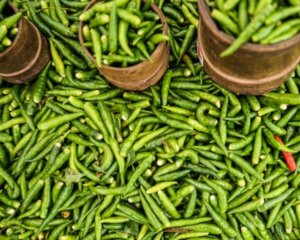[ad_1]
For many who love fermented meals, we now welcome you into the great world of dilly beans.
There’s nothing fairly like a dilly bean. Whether or not they’re subsequent to a plate of cheese and crackers, on a sandwich, or taken straight from the jar in the course of winter whenever you’re sick of potatoes and pasta, these are the right snacks or addition to any meal.
The next is an excerpt from Wild Fermentation by Sandor Katz. It has been tailored for the Internet.
The way to Make Dilly Beans
Pickling meals in vinegar isn’t a fermentation course of. In brine pickling, coated in chapter 5, greens are preserved by lactic acid, which is produced by the motion of microorganisms on the greens. Vinegar pickling makes use of a fermented product, vinegar, however the acidity of the vinegar, together with warmth processing, prevents microorganism motion. Vinegar pickles comprise no dwell cultures.
In response to Terre Vivante, a French eco-education heart centered on natural gardening and preservation of Outdated World meals preservation methods, “Pickles have been all the time lacto-fermented in occasions previous, after which transferred to vinegar solely to stabilize them for business functions.”
Certainly, the nice benefit that vinegar pickling has over lacto-fermentation pickling is that vinegar pickles will final without end (effectively, virtually), whereas brined pickles will final for weeks or months, however not often for years, and undoubtedly not without end. Cookbooks are stuffed with vinegar pickling recipes, so I’ll provide only one: the dilly beans my father makes from his backyard each summer season and serves to his household and buddies all yr lengthy.
RECIPE: DIY Dilly Beans
Timeframe: 6 weeks
Particular Gear: Sealable canning jars: 1 ½ pint/750 milliliter dimension is greatest, as its peak completely accommodates the size of string beans
 Substances
Substances
- String beans
- Garlic
- Salt (my dad swears by coarse kosher salt, however sea salt is ok, too)
- Entire dried chili peppers
- Celery seed
- Recent dill (flowering tops greatest, or leaves)
- White distilled vinegar
Water
Course of
1. Guesstimate what number of jars you’ll fill with the string beans you may have. Completely clear jars and line them up.
2. Into every jar, place 1 clove of garlic, 1 teaspoon (5 milliliters) of salt, 1 complete crimson chili pepper, ¼ teaspoon (1.5 milliliters) of celery seed, and a flowering dill prime or small bunch of dill leaves. Then fill the jar with beans standing on finish, stuffing them as tightly as you may into the jar.
3. For every jar you may have crammed, measure 1 cup (250 milliliters) of vinegar and 1 cup (250 milliliters) of water. Boil the vinegar-water combination, then pour it into the jars over the beans and spices, to ½ inch (1 centimeter) from the highest of the jar.
4. Seal the jars and place them in a big pot of boiling water for a 10-minute warmth processing.
Depart the dilly beans for not less than 6 weeks for the flavors to meld, then open jars as desired and luxuriate in. My father serves these dilly beans as an hors d’oeuvre. Warmth-processed pickles will be saved for years with out refrigeration.
Beneficial Reads
Ginger Carrots for a Wholesome Intestine
Lacto-Fermenting: A Sooner Technique to Ferment Greens
[ad_2]


